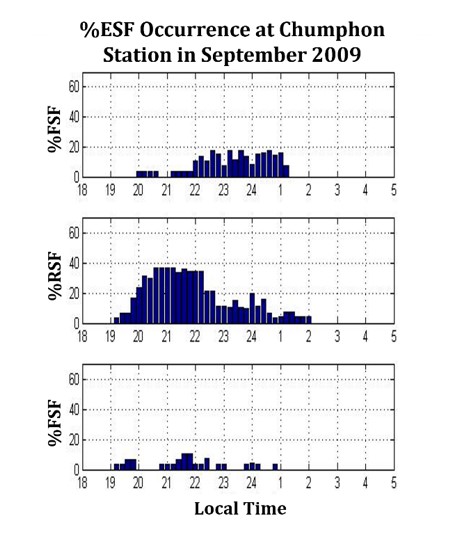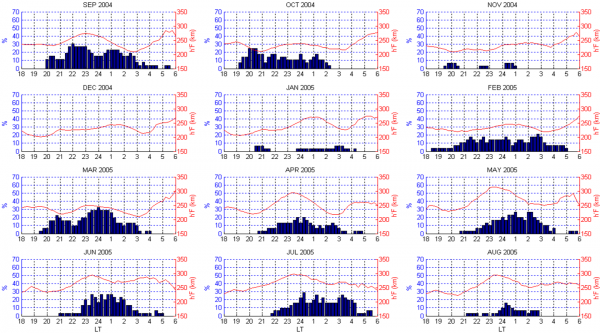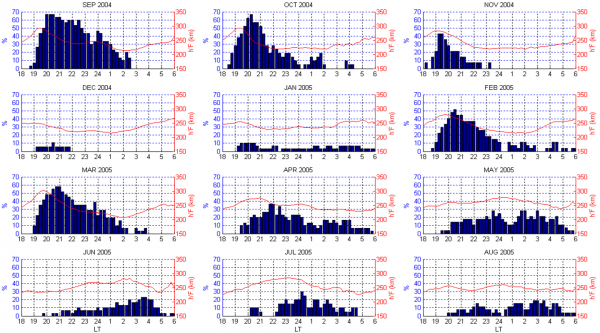The Equatorial Spread-F (ESF) phenomenon appears as the spreading of the F-Layer trace in the ionogram observed at the stations near the magnetic equator at night time. The ESF is a manifestation of the plasma bubble irregularities that occur under unique electro-dynamical conditions of the post-sunset ionosphere. We can say that the irregularities indicate the ionospheric disturbance. The major mechanism that plays the important role is the well known generalized Rayleigh-Taylor (R-T) instability, which is mainly caused by pre-reversal electric field enhancement (PRE) indicating the uplift of F-layer bottom side [3].
The ESF are categorized into 3 types :
- range spread-F (RSF), spreading on the range side (indicating the rise of plasma bubble from the bottomside of the ionosphere),
- frequency spread-F (FSF), spreading on the frequency side (indicating the disturbance at higher altitudes above the bottomside) and
- mixed spread-F (MSF)
based on U.R.S.I. Handbook of Ionogram Interpretation and Reduction
Ionogram showing examples of
(a) FSF trace (b) RSF trace and (c) MSF trace
 |
RSF Occurrence rate, 2004, Chiangmai, Thailand
RSF Occurrence rate, 2004, Chumphon, Thailand
Monthly mean percentage of the ESF occurrence in September, 2009,
at Chumphon station
 |
The %RSF occurrence is higher than the %FSF occurrence. Besides, the FSF onsets occur later than the RSF onsets. The %FSF occurrence has the peak after midnight. While the %RSF occurrence has the peak before midnight.

